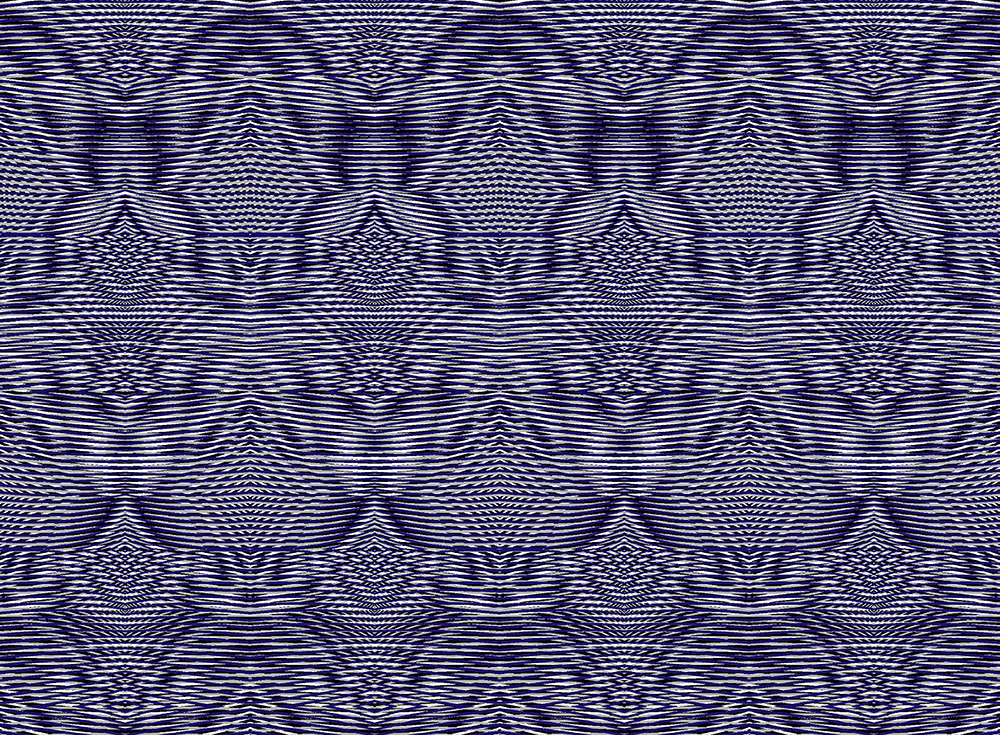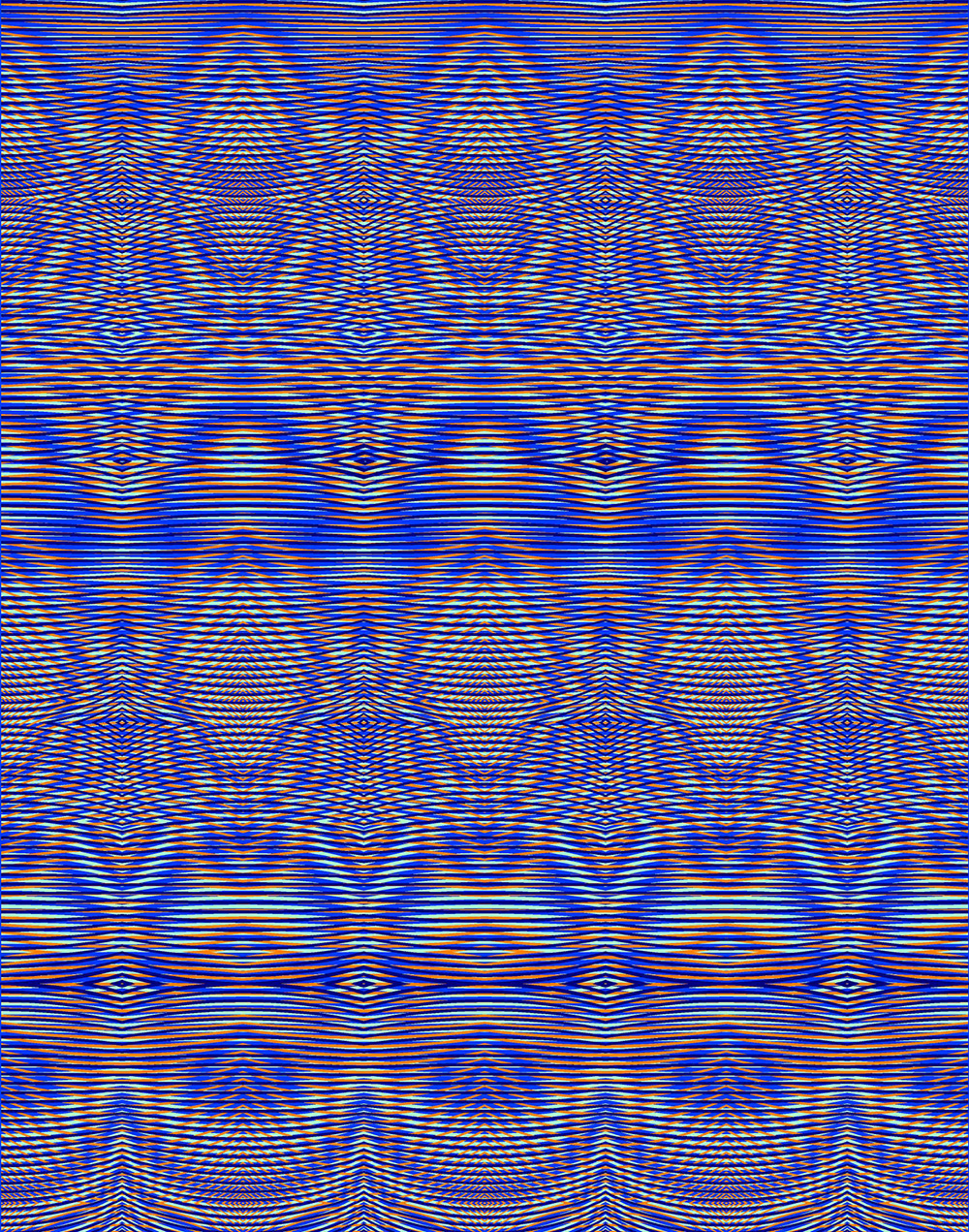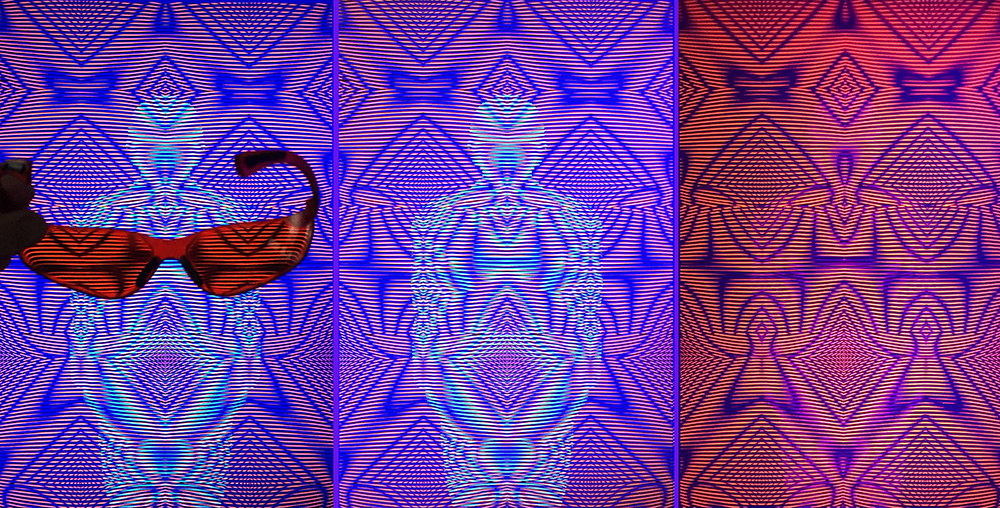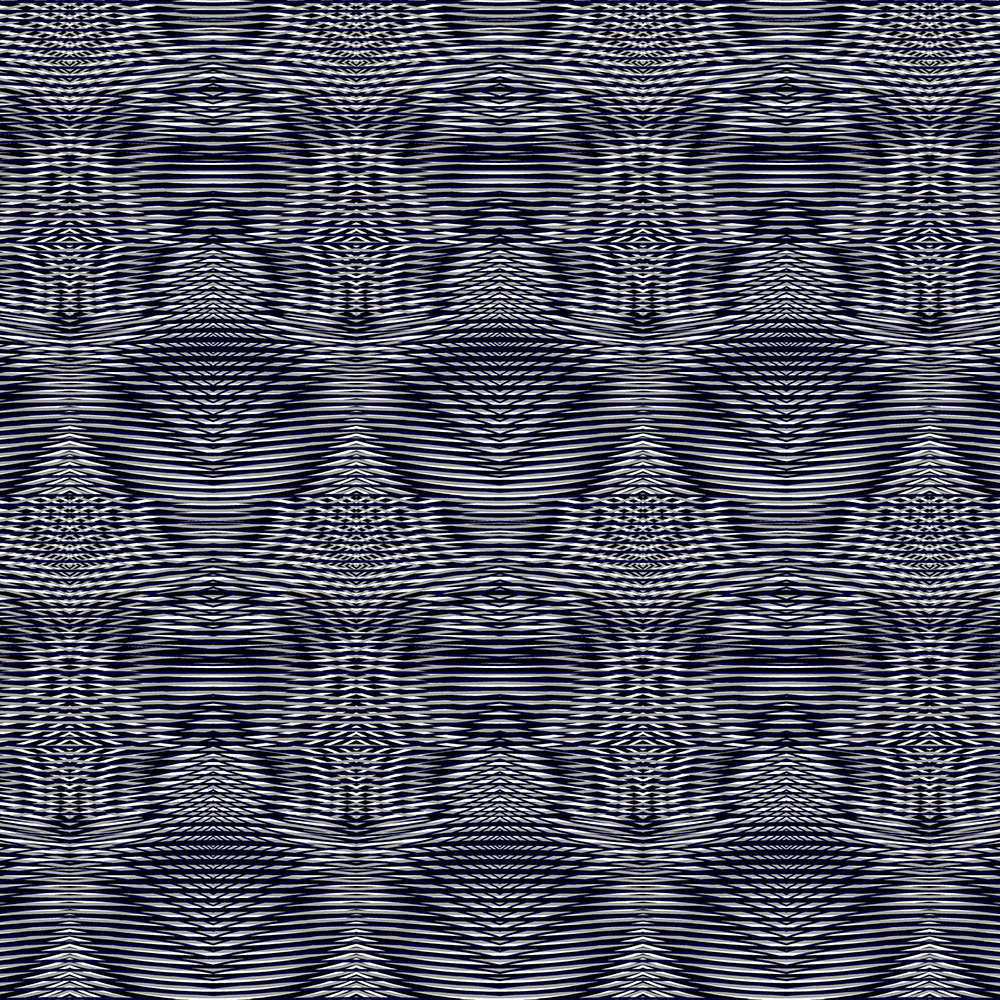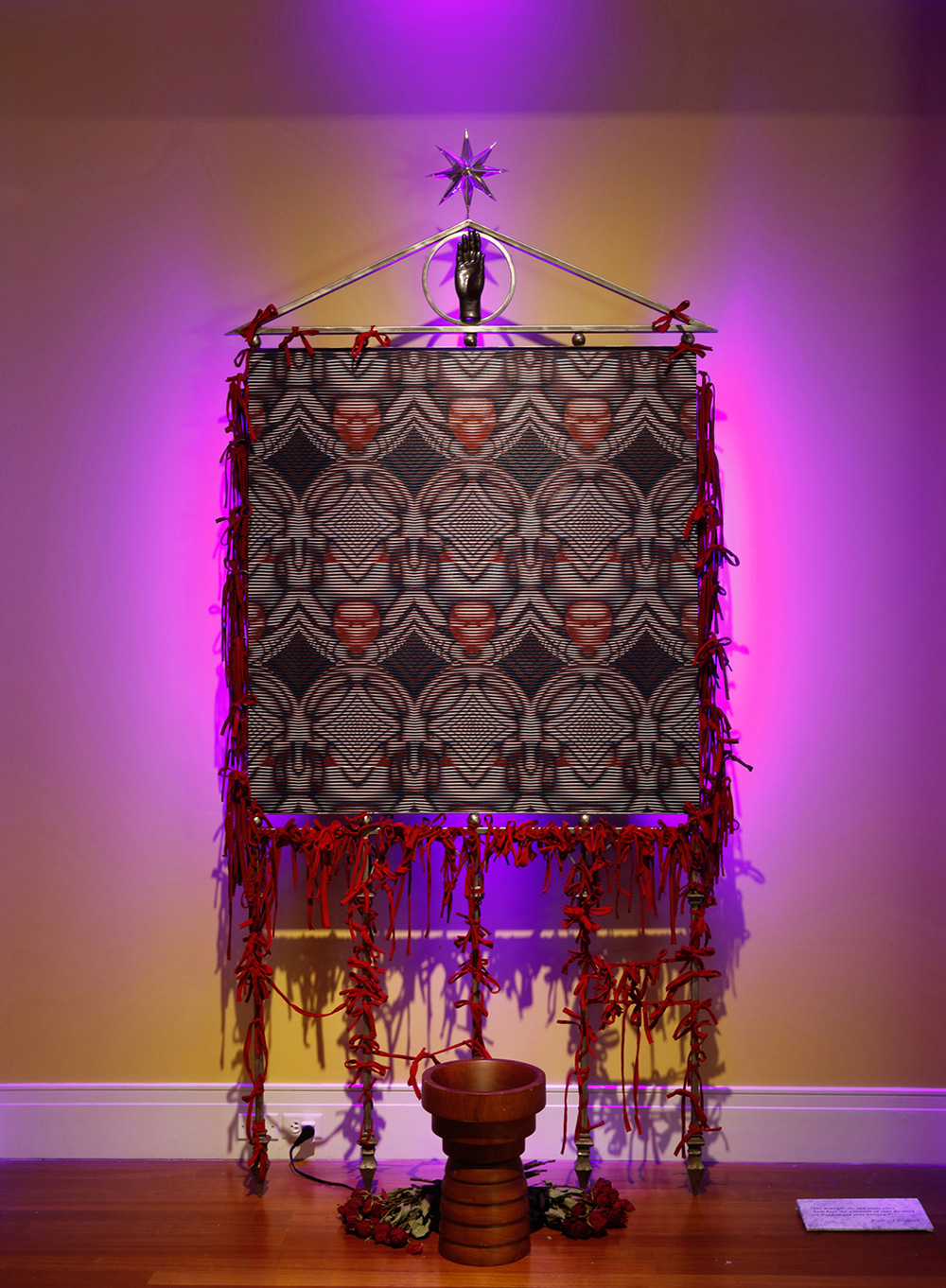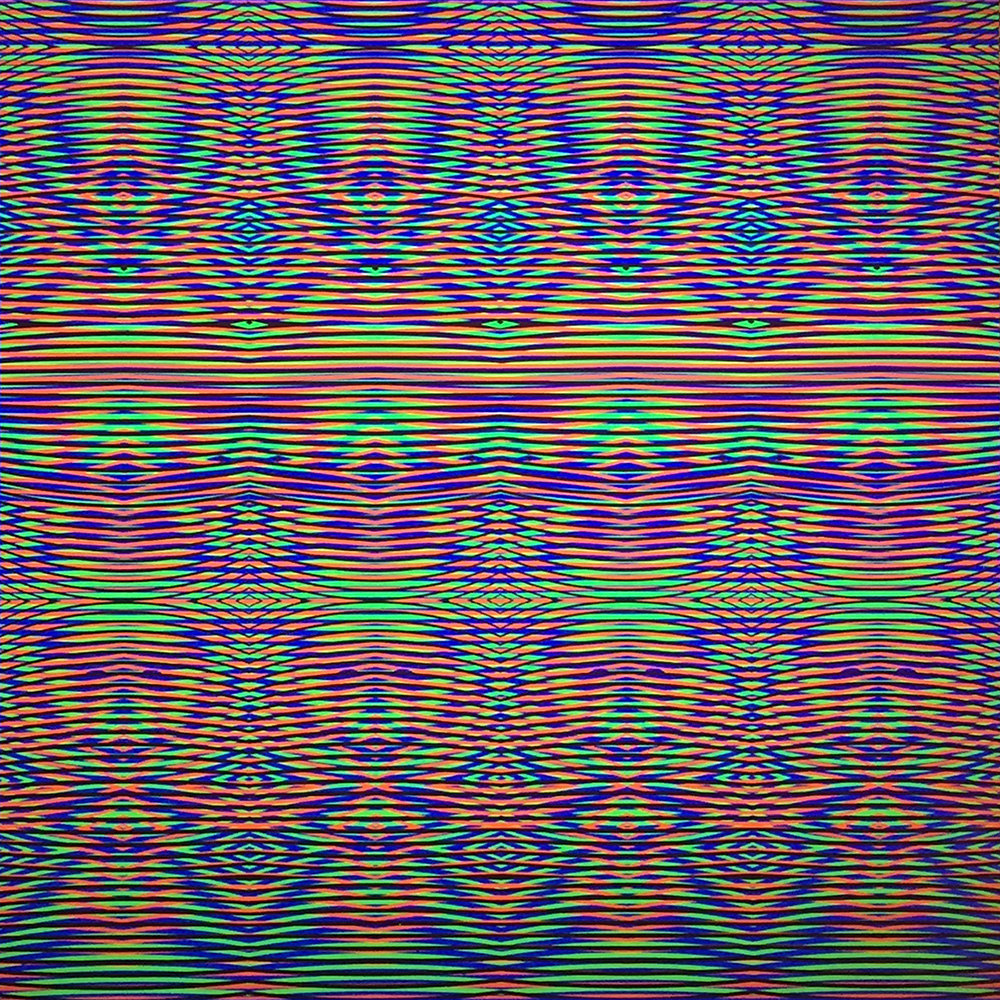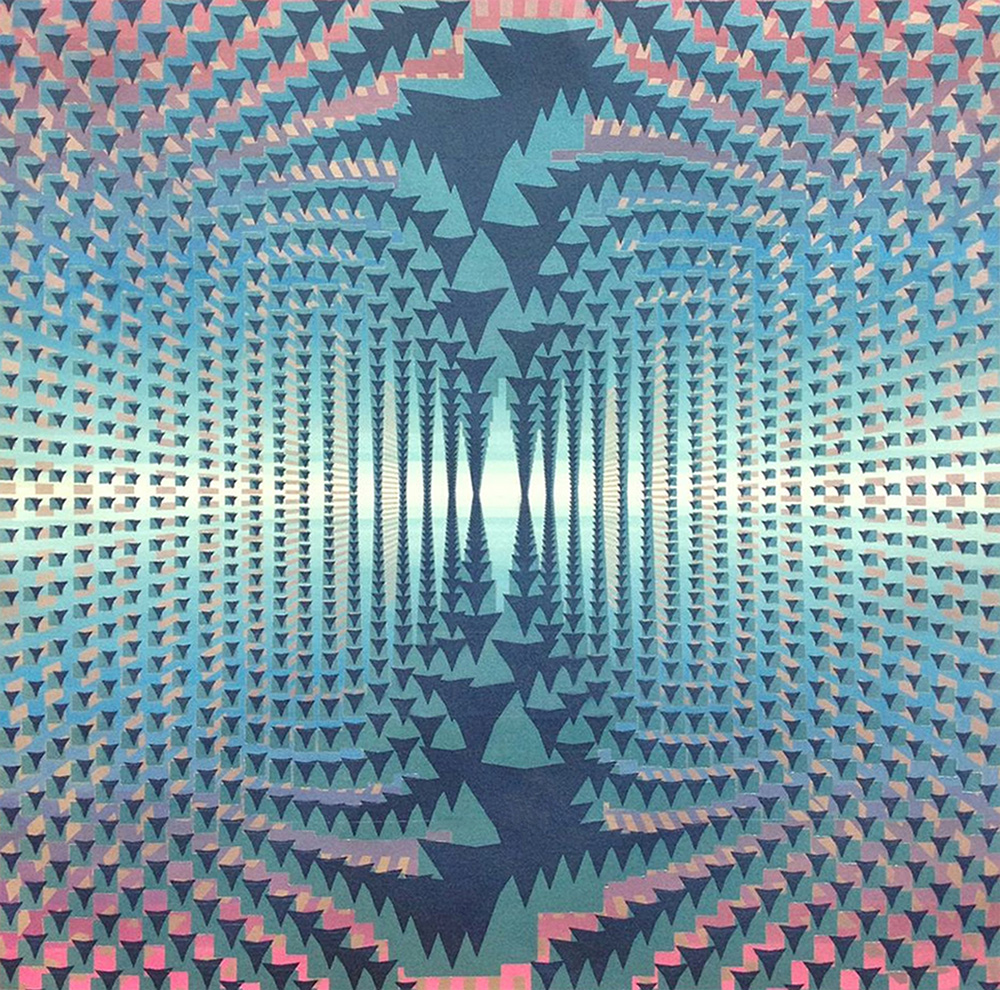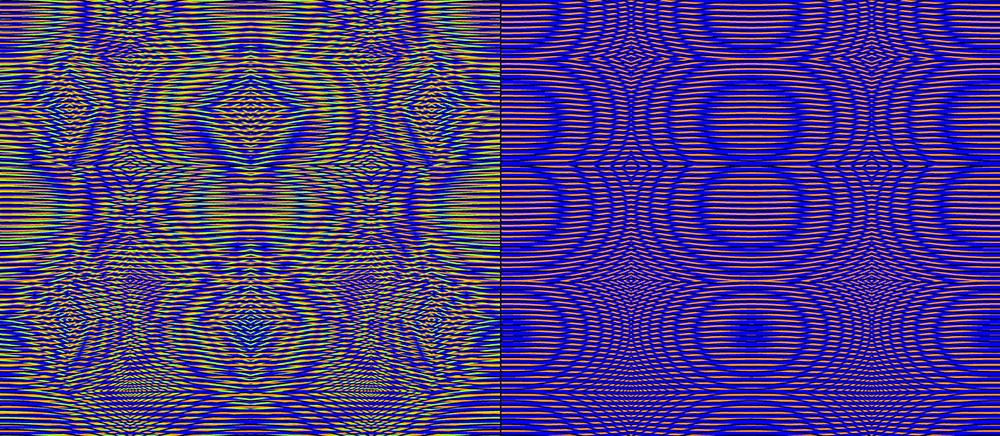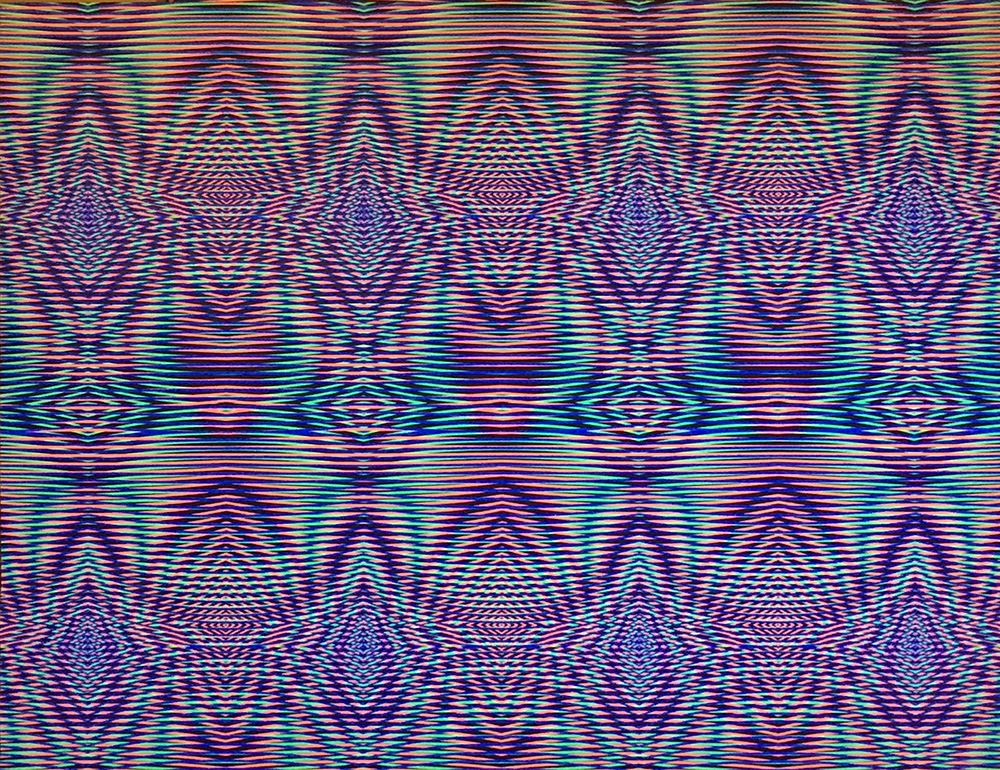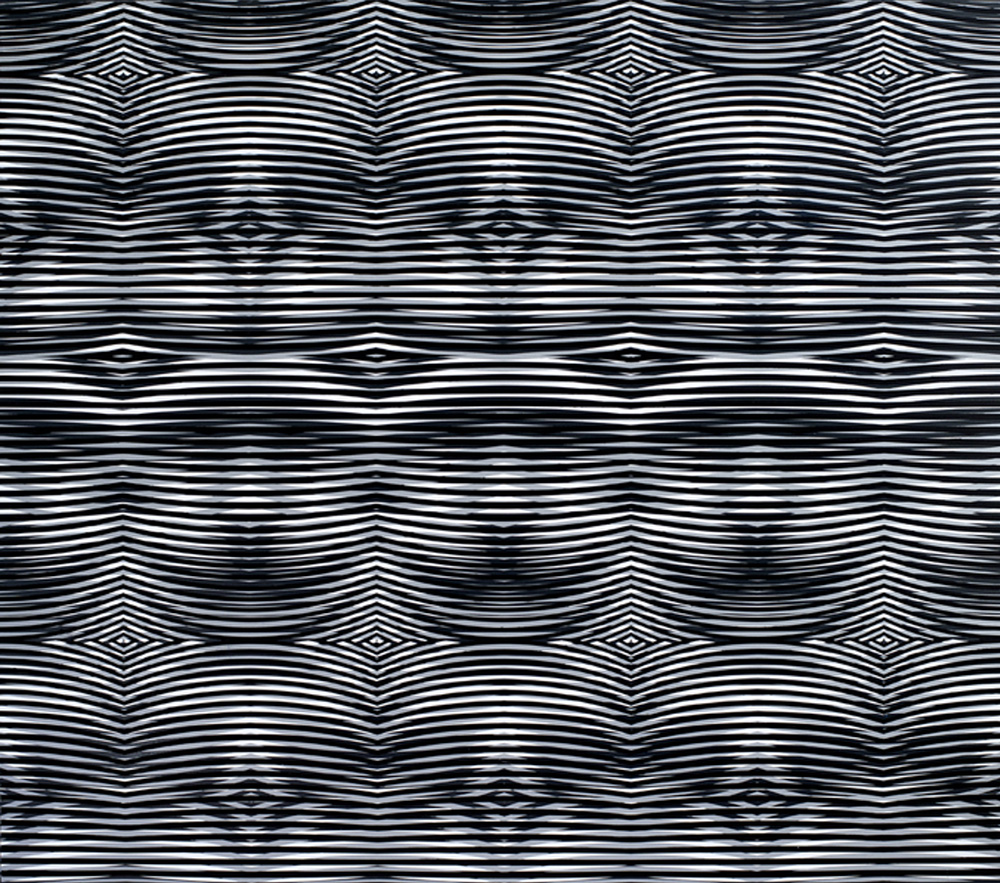In millions of ways, our minds are limited to what we know and readily understand. Beyond that, it's a lifelong challenge, and we can spend years trying to adjust our brains to something as simple as a feeling, a new environment, or pretty much anything. James Flynn, like all of us, has had to overcome innumerable changes in his life, and uses his work to address the experience of experiencing, the basic system by which we create our perception of a changing reality. His paintings manipulate light and perception, giving the viewer a unique experience from every angle.
We got to catch up with Flynn after his winning submission in Baton Rouge Gallery's Surreal Salon 11. Read on below...

So you were a pilot for quite a sizable portion of your life, when did you start making art? Are you still a pilot to some degree?
I have made art all my life and, born and raised in the rich culture of New Orleans, it seemed natural that I would be drawn to Surrealism. Although I have always painted, at the age of 17 I began my life on the water as a mariner. In the course of sailing on foreign flag cargo ships to Brazil and Africa, I studied the science of Spherical Trigonometry and became skilled in the art of Terrestrial and Celestial Navigation. This experience created a new paradigm that contributed greatly to my aesthetic and the precise technique I use to make my art. While working on ships and boats I continued to make art, which, of necessity, was small and portable. I served a traditional and arduous Barpilot apprenticeship on the Lower Mississippi River (very much in the vein of Samuel Clemens) while I lived and worked out of Pilottown, Louisiana. In 1994, I set up an etching press in a makeshift studio at the mouth of the river, transporting everything by boat. In 2005, I lost everything when Hurricane Katrina swept my studio and my art into the Gulf of Mexico. The following year I suffered a life-changing injury that would forever alter the way I create art. Although I left the river in 2012 to pursue art and humanitarian relief efforts in the favelas in São Paulo, I suppose piloting will always be in my blood.
Do you incorporate elements of your identity and experience as a pilot into your art?
Ships, boats, and elements of life on the Mississippi certainly found their way into my art. However, I was a student of Surrealism, so my paintings had a foot in that world as well. In 1989, I ventured to Mexico to seek out the Surrealist painter/sculptor Pedro Friedeberg, whose work I encountered in New Orleans. This interaction proved to be a watershed moment in the development of my own artistic expression. I continue to engage Maestro Friedeberg as his lifelong student to this day, and have participated in several exhibitions with Friedeberg in Mexico.

What's your goal with each piece?
My aim is to challenge the viewer’s perception of reality. My paintings are visual essays on the interface between the nature of the mind, perception, and Quantum Mechanics, which posits that the universe is subjective and the observer determines reality. Time, energy, and the material world are illusory phenomena. My art is my spin on Wave-Particle Duality (the paradox that light and matter exist simultaneously as both wave and particle) and the classic quantum Double Slit Experiment whereby the act of observation of the quantum system collapses the wave function of an electron into particle form.
My paintings are experiential and interactive. I consider them visual allegories of quantum systems in which the viewer serves as the “Observer” and the painting’s intricate patterning serves as a “wave function” to be collapsed into a “particle form” image through the process of observation. By means of various effects and devices, the observer/viewer determines the “reality” of what is seen. The paintings are subjective, as the images change with the viewer’s sight angle and proximity.
Most of my paintings are composed of horizontal or vertical curvilinear bands which represent the “wave function.” These bands are composed of three separate pigments whose individual colors coalesce optically in the viewer’s eyes, creating new and different colors. Another dimension is created by illuminating the paintings with ultraviolet light, causing the pigments to emit photons as they fluoresce.
To further enhance the experience of wave function collapse into particle form I employ the Pareidolia Effect, which is the neural phenomenon whereby the brain organizes abstract stimuli into shapes, patterns, and forms that are familiar but unique to the individual viewer. It is the viewer’s brain that determines its own unique interpretation (particle form) of the abstract “wave” components of the image. Upon viewing the painting through a red filter lens, the viewer observes a pronounced radical shift and experiences a different image

How do you start them?
I essentially paint from my mind. While my optokinetic and visual illusionistic works are highly precise and scientifically determined, my Pareidolic paintings start off as purely improvisatory in the manner of surrealist automatism. As I still don’t have a proper studio, I paint outside on my back porch when the weather is favorable. The actual process of producing a painting is exhaustingly complex and very labor intensive. I paint with an Iwata Supernova spray gun, a ton of vinyl tape, and water-based automotive paint.
They have a psychedelic quality to them, is that intentional?
As a child growing up in New Orleans I was overwhelmingly influenced by the mind-blowing spectacle and pageantry of Mardi Gras. In my youth, black light posters became the new big thing, so I started using fluorescent paint. I definitely see the psychedelic qualities in my Pareidolic work. I suppose this primarily stems from my fascination with visual perception, qualia (the experiencing of one’s experiencing), and the nature of human consciousness.
Ultimately, though, my paintings are visual illusionistic experiments in ambiguous geometry, skewed perspective, and the Pareidolia Effect.

What artists have you looked up to over the years? Do you have any specific inspirations?
As a child, I cut my teeth on artworks of Salvador Dali and Victor Vasarely from books I found in the library. I later discovered Georges Seurat and became obsessed with Chromoluminarism, the technique he innovated. Surrealist painter/sculptor Pedro Friedeberg has been my principle influence. I have enjoyed a creative dialog with Maestro Friedeberg for the last thirty years. I was fortunate to work as the last studio assistant to Abstract Minimalist Peter Lobello, whose work and techniques also deeply influenced me.
Was this your first time entering surreal salon?
I have been privileged to participate in Baton Rouge Gallery’s Surreal Salon for the past three years. All of the participating artists are grateful to the Baton Rouge Gallery and Juxtapoz for providing such an awesome opportunity to get their work shown.
Pedro Friedeberg has been featured twice in the pages of Juxtapoz Magazine. He is considered one of the last living Surrealists.


